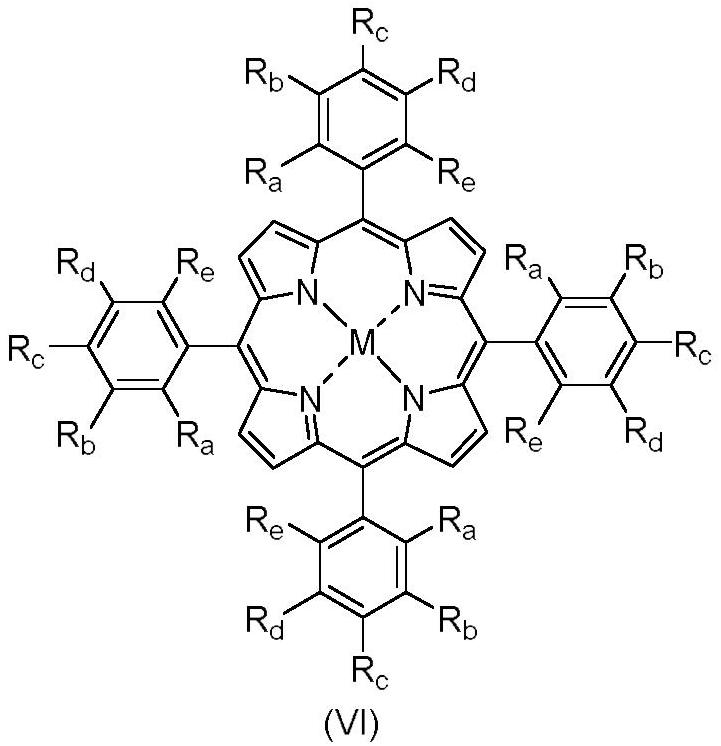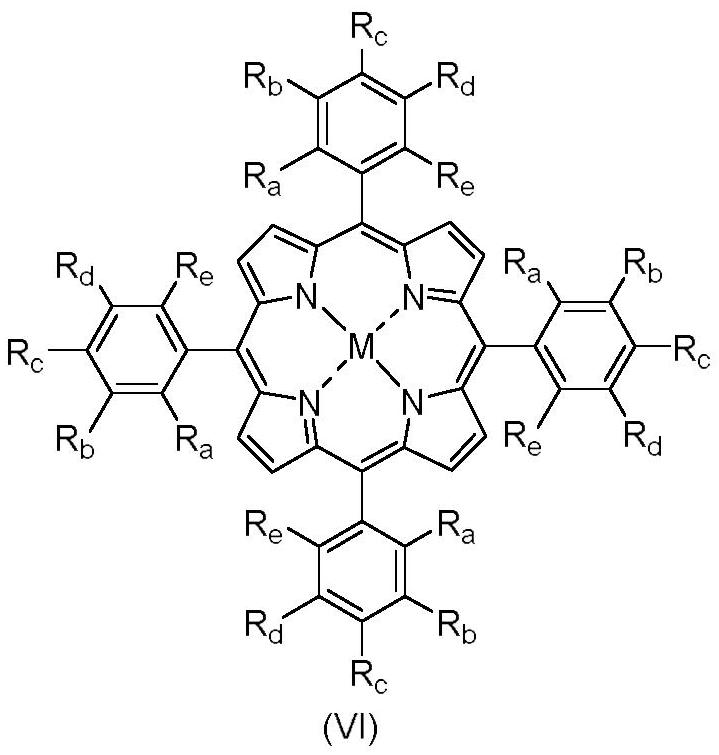A kind of method for selective oxidation of ethylbenzene compounds
A compound and selective technology, which is applied in the preparation of organic compounds, chemical instruments and methods, and the preparation of carbonyl compounds by oxidation, can solve the problems of poor safety, difficult activation, non-compliance, etc., and avoid the use of toxic and harmful organic reagents, The effect of low peroxide content and novel reaction mode
- Summary
- Abstract
- Description
- Claims
- Application Information
AI Technical Summary
Problems solved by technology
Method used
Image
Examples
Embodiment 1
[0033] In a 100 mL agate ball mill jar, 1.51 g (10 mmol) of 4-nitroethylbenzene, 0.0004 g (0.0005 mmol) of 5,10,15,20-tetrakis(4-chlorophenyl)porphyrin cobalt(II), 2.57 g (20 mmol) of 70% t-butyl hydroperoxide aqueous solution and 4.53 g of anhydrous sodium sulfate were mixed uniformly, and the ball mill jar was sealed. At room temperature, the ball milling reaction was carried out at 600 rpm for 12.0 h, and the ball milling was stopped every 1.0 h, and the gas in the ball milling jar was released. After the reaction was completed, the obtained reaction mixture was dissolved in 30 mL of absolute ethanol, and stirred at room temperature for 30.0 min. Filter, wash the obtained filter cake with 2×10 mL of absolute ethanol, combine the ethanol solutions, and dilute the obtained ethanol solution to 100 mL. Pipette 10 mL of the obtained solution, add internal standard 2-naphthoic acid, and carry out liquid chromatography analysis. The conversion rate of 4-nitroethylbenzene was 27%...
Embodiment 2
[0035] In a 100 mL agate ball mill jar, 1.51 g (10 mmol) of 4-nitroethylbenzene, 0.0020 g (0.0025 mmol) of 5,10,15,20-tetrakis(4-chlorophenyl)porphyrin cobalt(II), 2.57 g (20 mmol) of 70% t-butyl hydroperoxide aqueous solution and 4.53 g of anhydrous sodium sulfate were mixed uniformly, and the ball mill jar was sealed. At room temperature, the ball milling reaction was carried out at 600 rpm for 12.0 h, and the ball milling was stopped every 1.0 h, and the gas in the ball milling jar was released. After the reaction was completed, the obtained reaction mixture was dissolved in 30 mL of absolute ethanol, and stirred at room temperature for 30.0 min. Filter, wash the obtained filter cake with 2×10 mL of absolute ethanol, combine the ethanol solutions, and dilute the obtained ethanol solution to 100 mL. Pipette 10 mL of the obtained solution, add internal standard 2-naphthoic acid, and carry out liquid chromatography analysis. The conversion rate of 4-nitroethylbenzene was 30%...
Embodiment 3
[0037] In a 100 mL agate ball mill jar, 1.51 g (10 mmol) of 4-nitroethylbenzene, 0.0008 g (0.0010 mmol) of 5,10,15,20-tetrakis(4-chlorophenyl)porphyrin cobalt(II), 2.57 g (20 mmol) of 70% t-butyl hydroperoxide aqueous solution and 4.53 g of anhydrous sodium sulfate were mixed uniformly, and the ball mill jar was sealed. At room temperature, the ball milling reaction was carried out at 600 rpm for 12.0 h, and the ball milling was stopped every 1.0 h, and the gas in the ball milling jar was released. After the reaction was completed, the obtained reaction mixture was dissolved in 30 mL of absolute ethanol, and stirred at room temperature for 30.0 min. Filter, wash the obtained filter cake with 2×10 mL of absolute ethanol, combine the ethanol solutions, and dilute the obtained ethanol solution to 100 mL. Pipette 10 mL of the obtained solution, add internal standard 2-naphthoic acid, and carry out liquid chromatography analysis. The conversion rate of 4-nitroethylbenzene was 28%...
PUM
 Login to View More
Login to View More Abstract
Description
Claims
Application Information
 Login to View More
Login to View More - R&D
- Intellectual Property
- Life Sciences
- Materials
- Tech Scout
- Unparalleled Data Quality
- Higher Quality Content
- 60% Fewer Hallucinations
Browse by: Latest US Patents, China's latest patents, Technical Efficacy Thesaurus, Application Domain, Technology Topic, Popular Technical Reports.
© 2025 PatSnap. All rights reserved.Legal|Privacy policy|Modern Slavery Act Transparency Statement|Sitemap|About US| Contact US: help@patsnap.com



